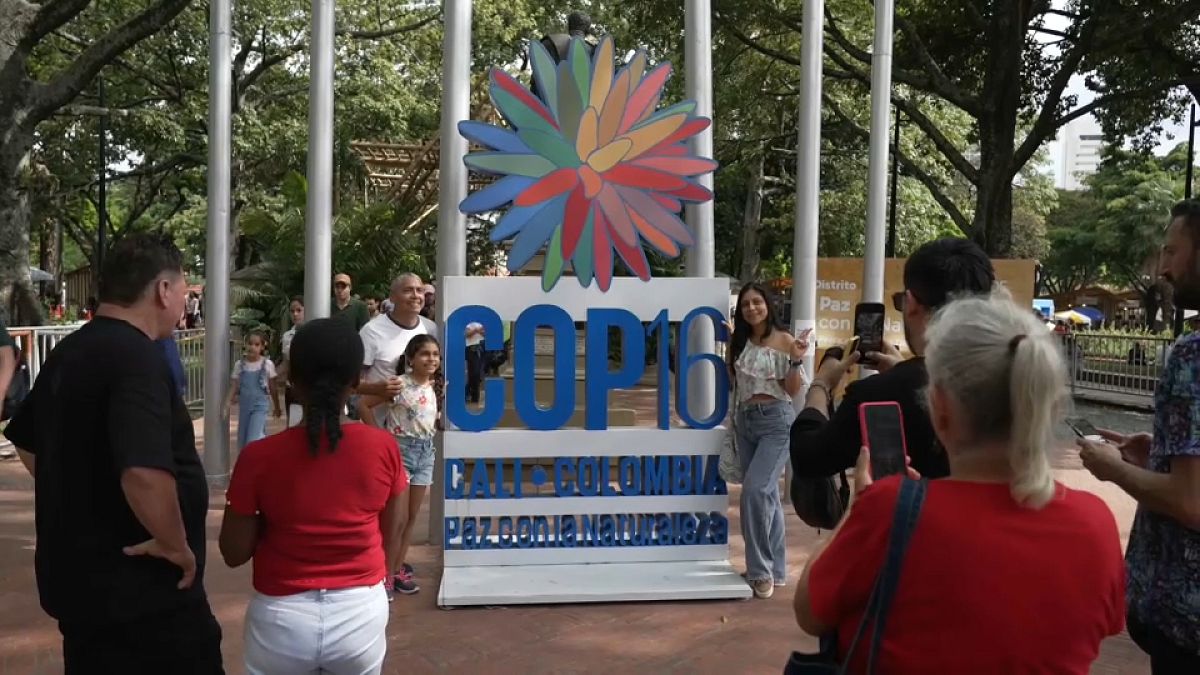The United Nations COP16 biodiversity summit is currently underway in Cali, Colombia with a focus on implementing the Global Biodiversity Framework (GBF) adopted by nearly 200 countries at the end of 2022. The summit has attracted 140 ministers and a dozen heads of state who are working towards clarifying the implementation of the GBF. One of the key targets outlined in the GBF is the ’30 by 30′ goal, where more than 100 countries have committed to protecting 30% of the planet’s lands and oceans by 2030. A recent report by the UNEP highlighted that while progress has been made in expanding protected areas globally, there is still a long way to go to meet the set targets by 2030.
Representatives of indigenous communities from all over America are also present at the summit, urging countries to take quick action to honor their commitments made two years ago. Teddy Sinacay Tomas, President of CECONSEC, emphasized the slow progress in implementing changes that reverse harmful activities and restore biodiversity. Sandra Valenzuela, CEO of WWF Colombia, echoed these sentiments, stressing the need for accelerated action to achieve the targets effectively. While 17% of terrestrial areas and 8% of marine and coastal regions are currently protected globally, efforts must be made to enhance protection and promote restoration to meet the goals set for 2030.
The European Union has emerged as a leader in the fight for biodiversity, with initiatives like Natura 2000 and nature restoration laws contributing to the protection of land. Florika Fink-Hooijer, Director-General of the Environment Department at the European Commission, expressed confidence in reaching the 2030 land protection goal soon. However, she acknowledged the challenges surrounding water protection and the necessity for a comprehensive water resilience strategy. Alongside environmental policies, there are ongoing discussions on the need to triple green investments to meet the ambitious targets set for 2030. This highlights the importance of financial commitments in achieving global biodiversity goals.
The UNEP report noted that while there has been an increase in protected areas globally since 2020, the expansion of the global network must accelerate over the next six years to meet the set targets. The slow pace of progress in implementing changes to reverse environmental degradation was highlighted by indigenous community representatives attending the summit. National action plans not only need to enhance protection but also promote restoration efforts to effectively achieve the set targets for 2030. The urgency of tripling green investments to meet the ambitious biodiversity targets by 2030 was also emphasized at the summit, underlining the crucial role of financial commitments in addressing global biodiversity challenges.
In conclusion, the United Nations COP16 biodiversity summit in Cali, Colombia is a crucial platform for discussing and implementing the Global Biodiversity Framework (GBF) to address environmental degradation and protect ecosystems worldwide. With representatives from various countries, including indigenous communities, advocating for accelerated action and enhanced protection of biodiversity, it is evident that more efforts are needed to meet the targets set for 2030. The European Union’s leadership in biodiversity conservation, coupled with the recognition of the need for comprehensive water resilience strategies, demonstrates the diverse challenges and opportunities in achieving global biodiversity goals. Financial commitments and green investments are key components in driving progress towards meeting the ambitious targets and ensuring a sustainable future for all.











